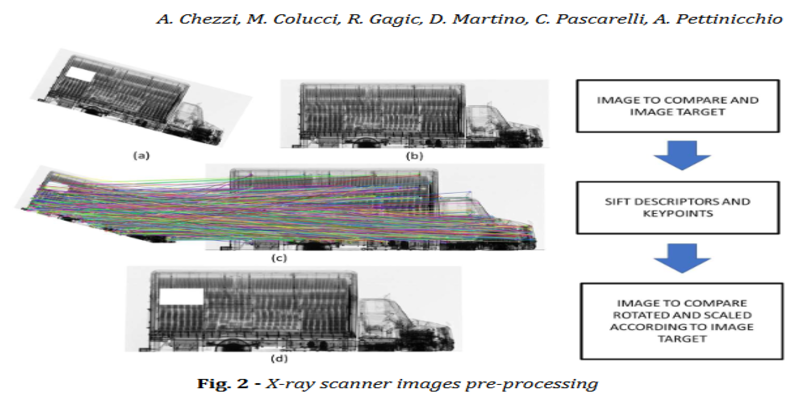
The ISACC project continues to produce outputs even after the its natural closure. The scientific team from Unisalento and the University of Montenegro published an original scientific paper in the Journal of Maritime Sciences Vol. 24, No. 1/2023.
The authors, including Andrea Chezzi, Mattia Colucci, Radmila Gagic, Danilo Martino, Claudio Pascarelli, and Adriana Pettinicchio, have worked to provide scientific evidence for the extensive work carried out during the ISACC project. The paper addresses relevant topics such as Customs, Antifraud, X-Ray, Computer vision, SIFT (Scale-Invariant Feature Transform). Submitted at the end of 2022, the article was accepted by the journal on March 27 and finally published online on June 12, 2023.
The article’s theme revolves around the identification of one of the goals of customs authorities: to identify cargos at borders that do not match their declaration, contain illegal items, or pose a hazard to society. Customs X-ray inspection procedures enable the detection of suspicious cargos and are an excellent support tool for customs officials.
The ISACC project aims to develop a web platform that integrates data from heterogeneous technologies and systems, providing a rich information base to support customs authorities during anti-fraud controls. The paper presents a preliminary study based on the SIFT algorithm for the automatic detection of visual changes between scanner X-Ray images.
Every year, global international trade in counterfeit, pirated and illegal goods amounts to hundreds of billions of euros. Customs authorities working at borders play a vital role in contrasting this phenomenon, especially in regions that have faced longstanding challenges in this regard, such as those between Italy, Albania and Montenegro.
Within the ISACC project an IT platform supporting antifraud customs controls has been designed and developed to integrate data coming from heterogeneous technologies and systems, creating a rich information base called Custom Footprint (CF). Customs authorities can utilize this CF to search for variances, which may indicate fraud, at intermediate customs control points, such as the ports of Bari, Durres and Bar, related to the ISACC project. The article proposes an approach for comparing scanner X-ray images that are part of the CF, based on the SIFT algorithm, and presents preliminary results obtained with a synthetic dataset.
As shown in the relevant section, the final results can be considered encouraging, especially when the differences between the two images are below the 20 % threshold. This represents a scenario where the proposed method is most useful, as significant differences between two images can be easily detected visually by a customs operator without the need for computer assistance.
In conclusion, the article focuses on future directions aimed at further improving the developed method and testing it on a much larger number of samples, both synthetic and real. One possible solution that may be implemented and tested is dividing the images into smaller sections (tiles) to not only indicate the difference between the two images but also identify the specific region where this difference exists.




